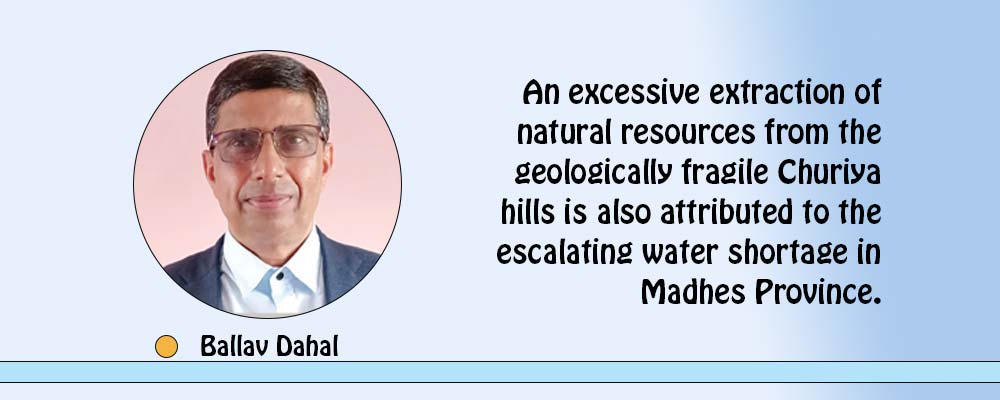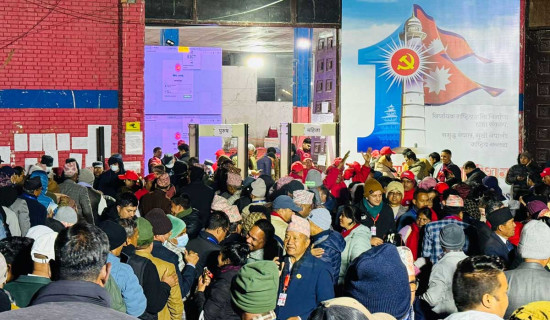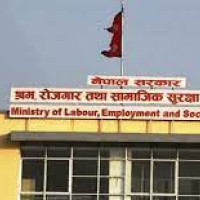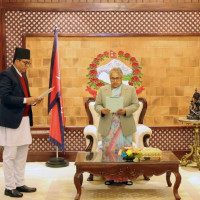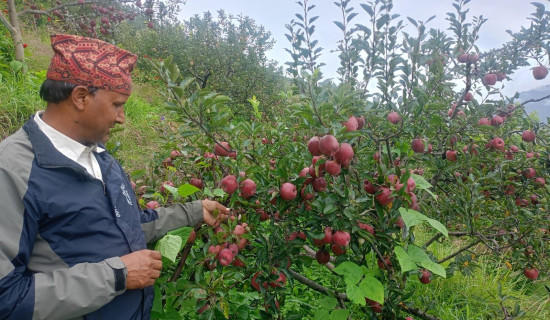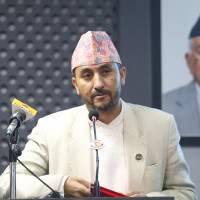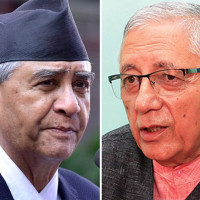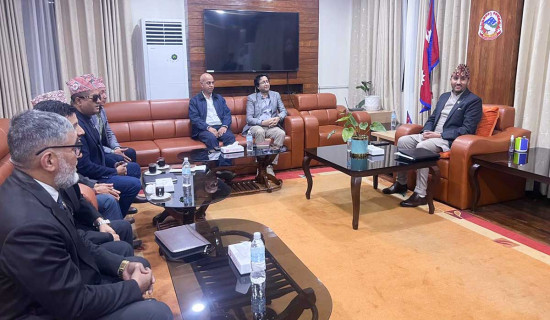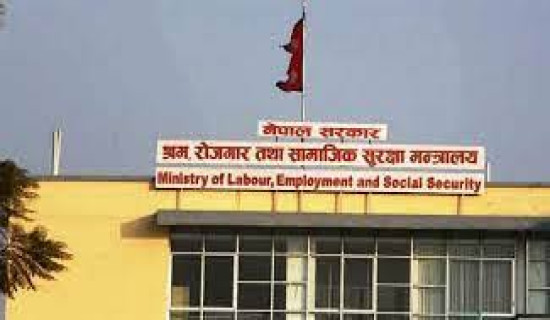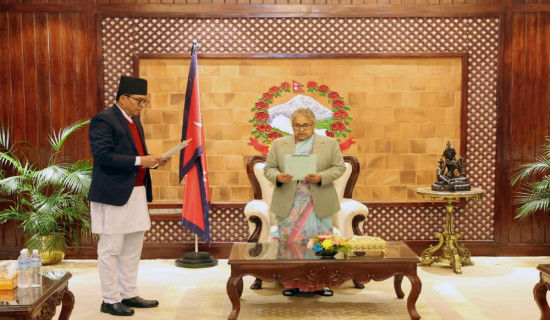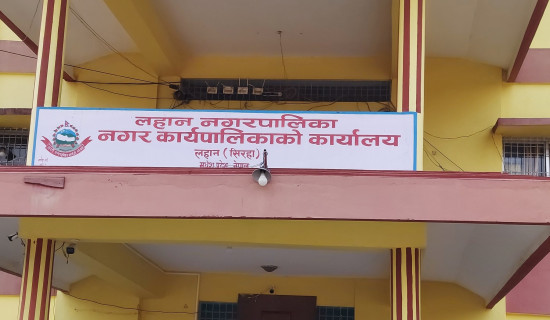- Wednesday, 17 December 2025
Resolve Water Crisis In Madhes
The persistent spell of drought has left farmers in Madhes Province, as well as other Terai districts, high and dry as they have been unable to plant crops, especially paddy, in this main farming season. Though this year’s monsoon entered Nepal nearly two weeks before its normal schedule, paddy plantation has failed to gather momentum in the province for lack of sufficient rainfall. Most farmers in the country depend on rain for paddy plantation, with the unavailability of adequate irrigation facilities. The drought-hit Terai region has so far recorded an extreme below-average rainfall. Earlier, the Weather Forecasting Division had projected less than average rainfall in that belt.
Groundwater is another vital source for irrigation as well as drinking water in the entire Terai region. But the level of groundwater has been falling sharply over the years. Erratic rainfall patterns and rising temperatures have hurt the groundwater recharge system. Owing to this, most water sources like rivers, streams, wells and tube wells have been found dried up alarmingly, causing unprecedented hardships to farmers and other residents alike. In most parts of Madhes, people appear to have been reeling from an acute shortage of drinking water, let alone irrigation. Drinking water is now being supplied to households by tankers in many parts of this province. Growing climate change effects, unsustainable groundwater withdrawal, and changed land-use trends are mostly responsible for the existing water crisis.
Sweltering heat
As estimated by the Madhes Province government, only about 45 per cent of the total arable land has been planted so far. The sweltering heat has affected life there. If the existing drought continues, the situation may worsen soon. The paddy fields where farmers had managed to transplant seedlings have already started cracking due to continuous dryness. Seven out of a total of eight districts of Madhes Province are now regarded as the most water crisis-hit. Saptari remains less affected as compared to other districts owing to its closeness to the Saptakoshi River.
The Terai region has been known as the country’s granary because of its plain land with alluvial soil, sufficient groundwater and favourable climate for the cultivation of paddy and other cereal crops. Government records show that irrigation facilities are available to a total of 273,410 hectares of land in Madhes Province. But, considering the existing paddy plantation hitches, the data might be erroneous. There is no doubt that agriculture is the mainstay of this province for its economic development. Every successive government promises to extend necessary support to farmers for commercial farming. But they are not found delivering on their pledges. It is ironic that the farmers are unable to increase their production in the absence of irrigation facilities and fertilisers.
Looking at the ongoing drought, paddy production in the crisis-prone zone is anticipated to fall significantly this year. The total paddy production in the country is projected to fall by as much as 20 per cent this fiscal year. Despite being an agricultural country, Nepal imports foodstuffs worth billions of rupees every year. With a drop in paddy production, the country may have to spend much more money on the import of food this year. There is also a possibility of an exorbitant hike in the prices of food. Several irrigation projects, including some national pride projects, have been under construction in Madhes Province and other parts of the Terai region to boost agricultural production and productivity. But what is worrying is that some important irrigation projects have remained incomplete even in decades, while others have failed to meet deadlines several times.
In view of the gravity of the problem, the federal government recently declared eight districts of the province as disaster-affected for a period of three months. Previously, the Madhes Province government had made a recommendation to the federal government to declare the area as drought-hit and unveil necessary relief measures at the earliest. Immediately after the declaration, Prime Minister KP Sharma Oli made an aerial inspection of the crisis-prone region. As the Prime Minister felt it necessary for the government to do something instantly, he announced the speedy installation of 500 deep-boring water systems in the province to deal with the persistent water crisis.
Installing such water systems may provide the drought-affected people with an immediate relief. But these water systems may not be adequate to cover such a wider area. Conservationists say that deep-boring systems will not be a sustainable solution to the looming water shortfalls in the region. They argue that they might have detrimental effects on the environment in the long run, as they contribute towards further depletion of groundwater. The level of groundwater has been going down each passing year because of its reckless extraction. The lingering spell of drought has worsened it.
Crucial issue
An excessive extraction of natural resources from the geologically fragile Churiya hills is also attributed to the escalating water shortage in Madhes Province. Environmentalists have been raising this issue for years. But, responsible government bodies and other stakeholders do not seem to have been so serious about this crucial issue. They need to give due attention to conserving the ecology of the Churiya hills.
Since the issue of drought is quite serious, the three-tier governments must come together to discuss the matter extensively and come up with immediate relief measures. The federal government also needs to intensify the construction of irrigation projects. Though such projects may not help address the challenges of irrigation for this year, efforts geared towards completing them as soon as possible might prove to be useful for the drought-hit farmers in the years to come. Governments also must work on long-term strategies aiming at tackling the bourgeoning water crisis in Madhes Province and other drought-prone areas.
(The author is a former deputy executive editor of this daily.)

